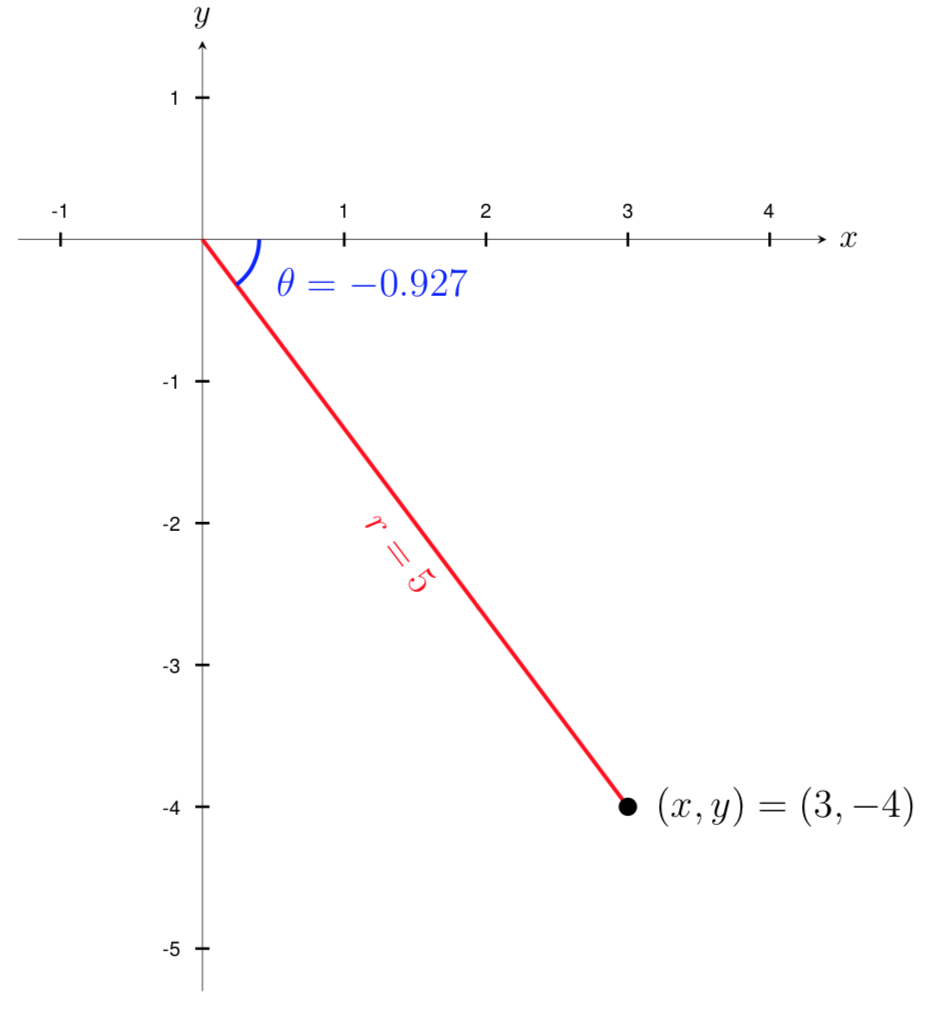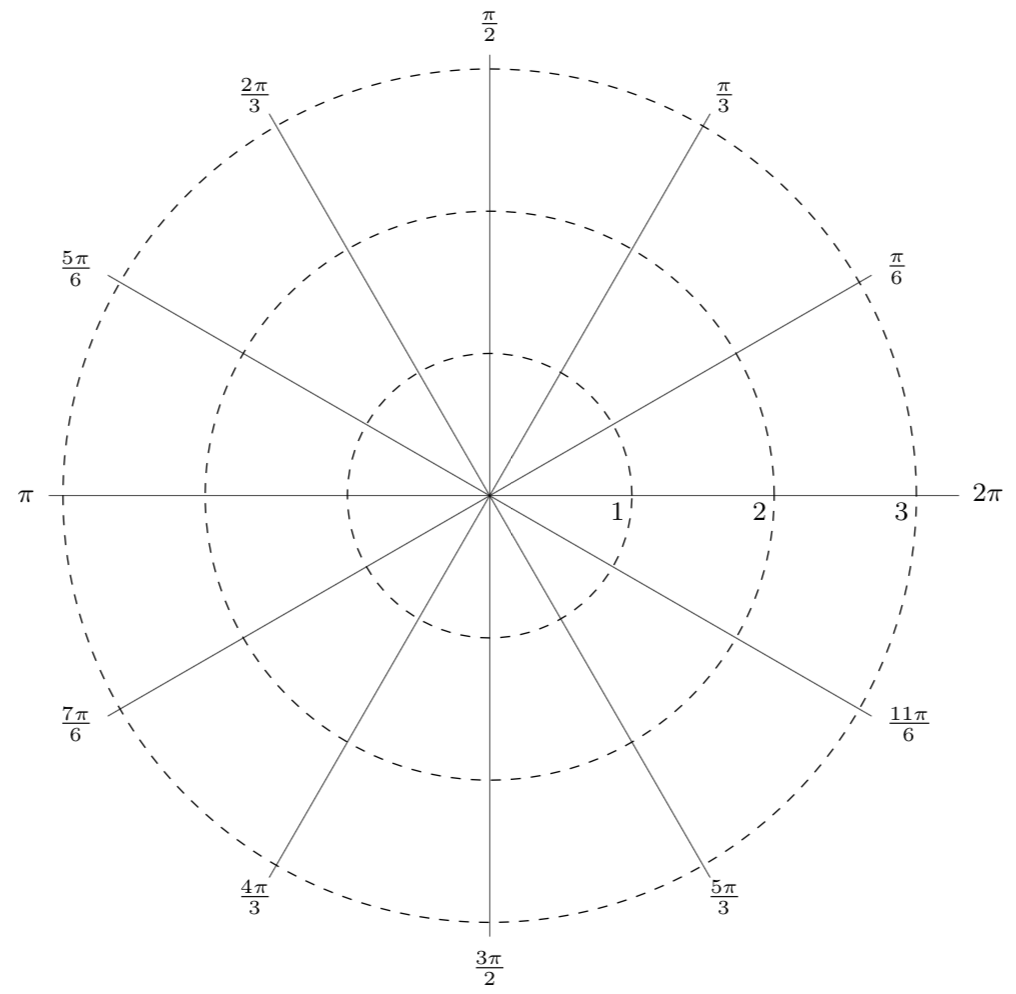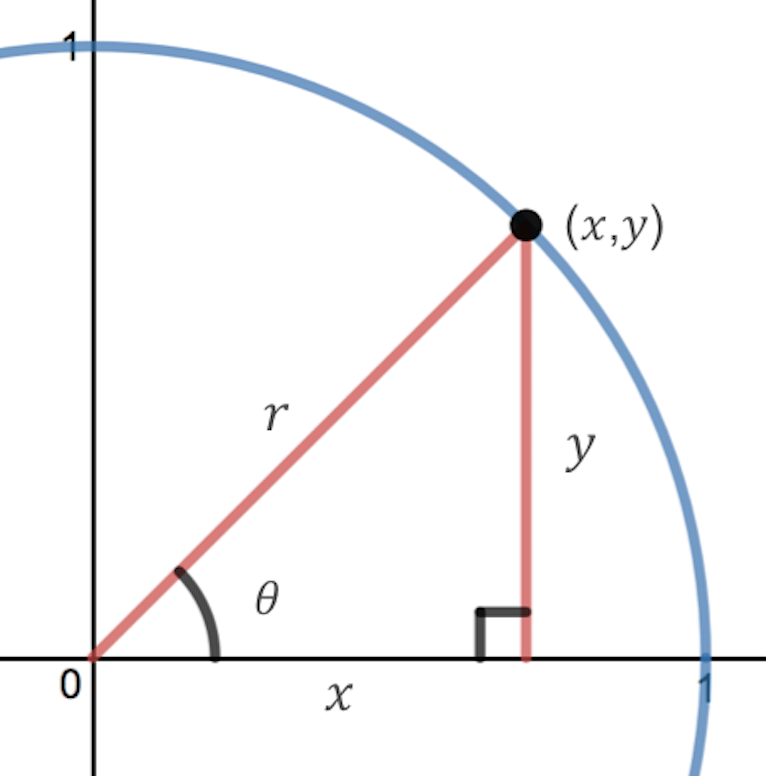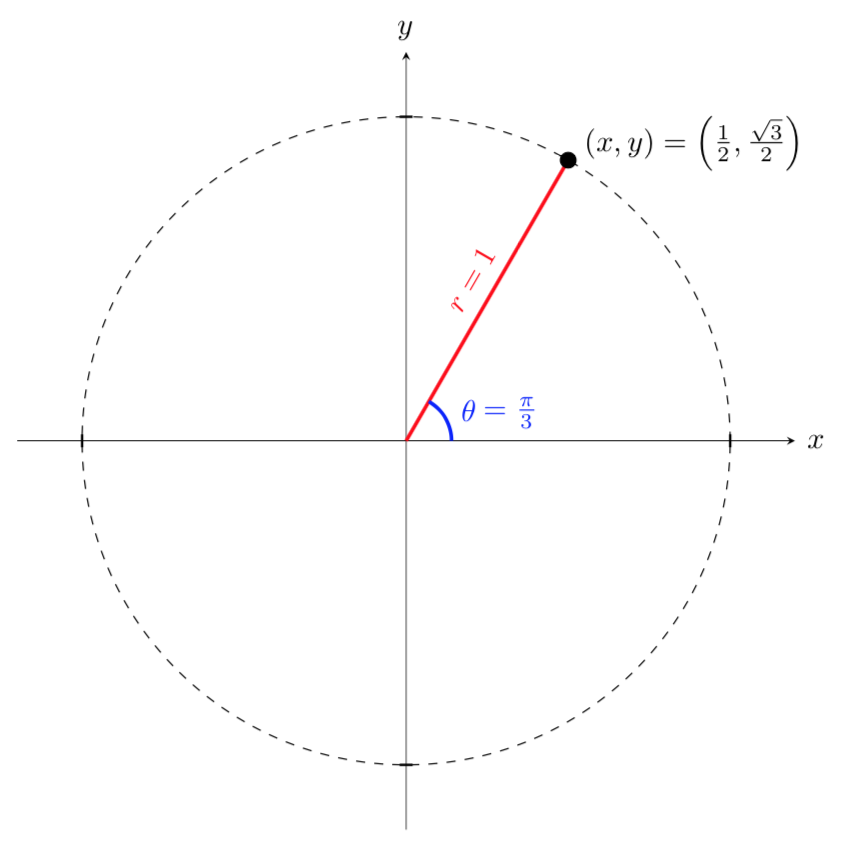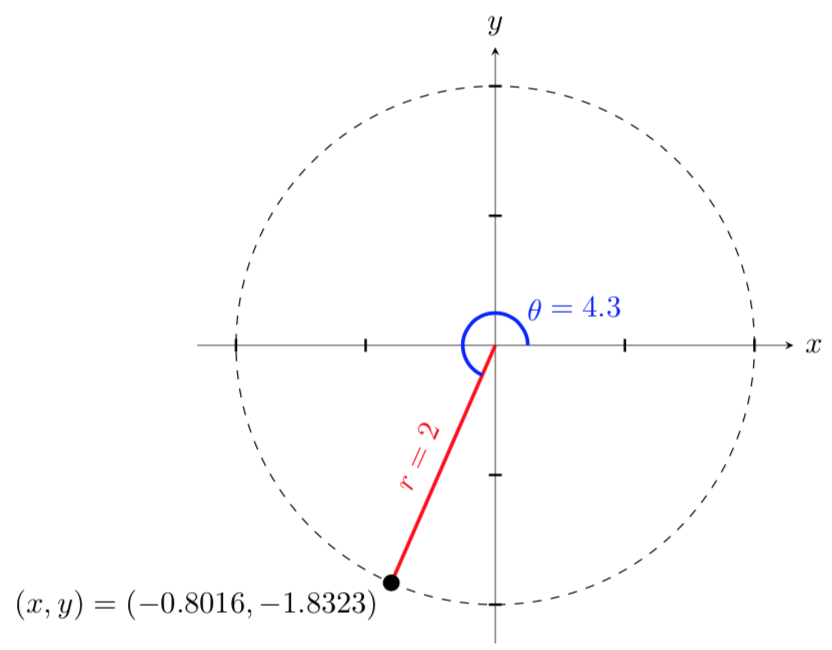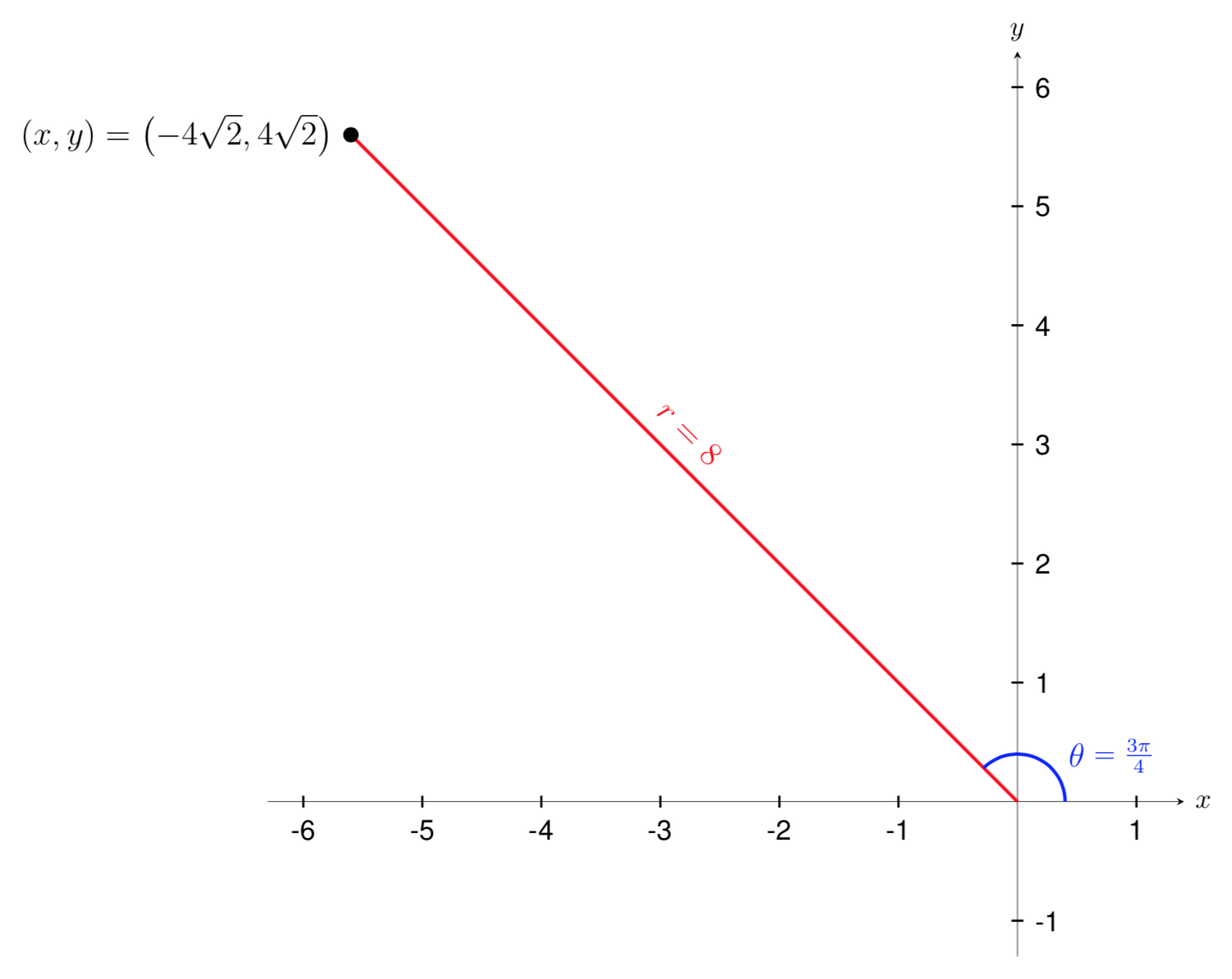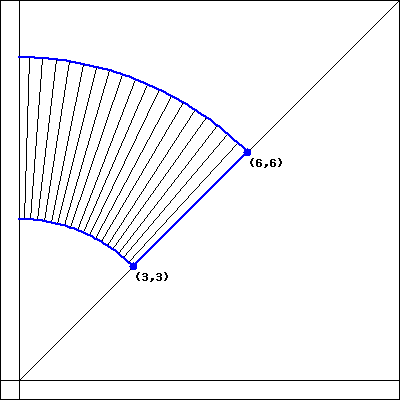Let’s start by plotting the point \((x,y)=(3,-4)\) on a graph and using the Pythagorean theorem to find the corresponding radius of the point. We get that
\begin{align*}
r^2 \amp= x^2 + y^2 \\
\\
r^2 \amp= 3^2 + (-4)^2 \\
\\
r^2 \amp= 9 + 16 \\
\\
r^2 \amp= 25 \\
\\
r \amp= 5 \text{.}
\end{align*}
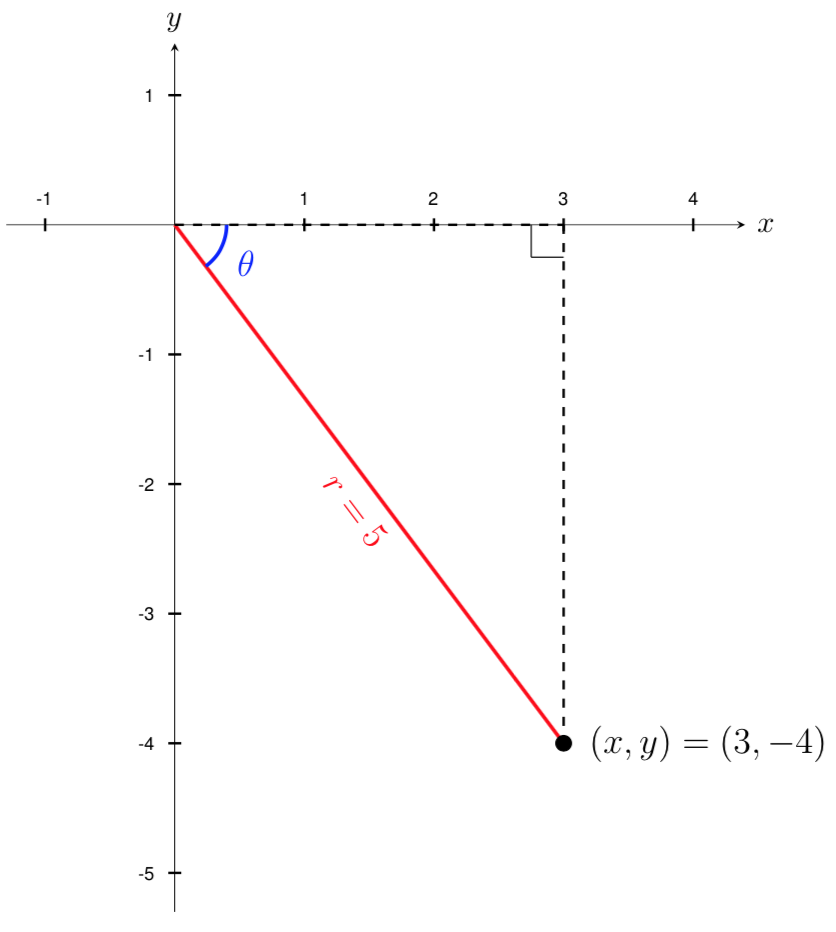
Now that we know the radius, we can find the angle using any of the three trigonometric relationships. Keep in mind that there may be more than one solution when solving for \(\theta\) and we will need to consider the quadrant that our \((x,y)\) point is in to decide which solution to use.
Using the cosine function, we get that
\begin{equation*}
\cos(\theta) = \frac{x}{r} = \frac{3}{5} = 0.6\text{.}
\end{equation*}
Since this cosine value does not correspond to a common angle on the unit circle, we must use the inverse cosine function to solve for \(\theta\text{,}\) which gives us
\begin{equation*}
\theta = \cos^{-1}(0.6) \approx 0.927 \text{ radians}\text{.}
\end{equation*}
Since \(0.927\) is greater than 0 and less than \(\pi/2 \approx 1.571\text{,}\) we know that \(\theta=0.927\) lies in Quadrant I. Since the point \((x,y)=(3,-4)\) is located in Quadrant IV, we must find the other angle on the unit circle with \(\cos(\theta) = 0.6\text{.}\)
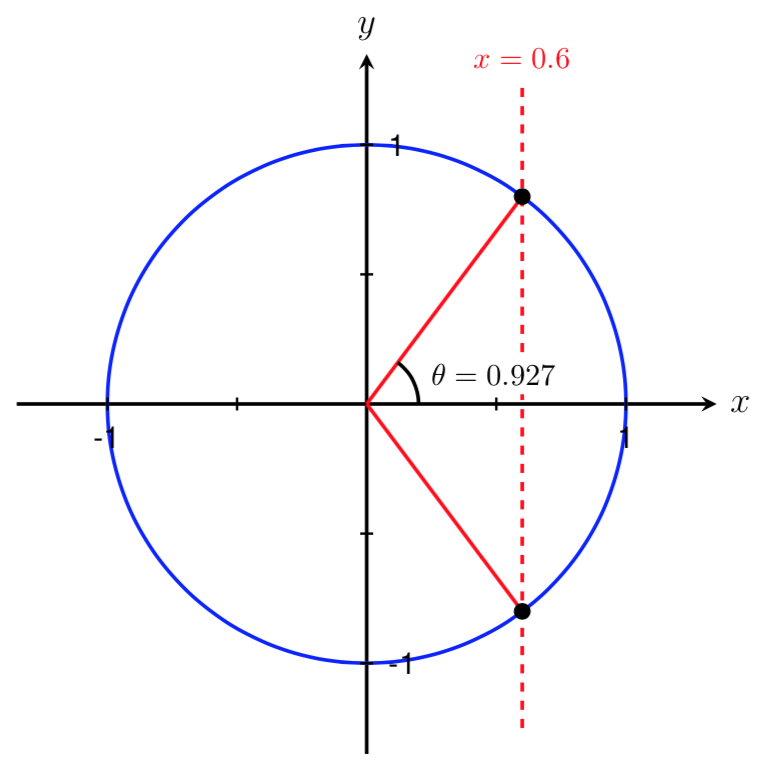
unit circle with cos(\theta)=0.6 one angle shown and labeled
We can use the symmetry of the unit circle to find this second angle. By symmetry, the magnitudes of the two angles shown below are equal. Thus, \(\theta=-0.927\) is another angle that satisfies \(\cos(\theta) = 0.6\text{.}\)
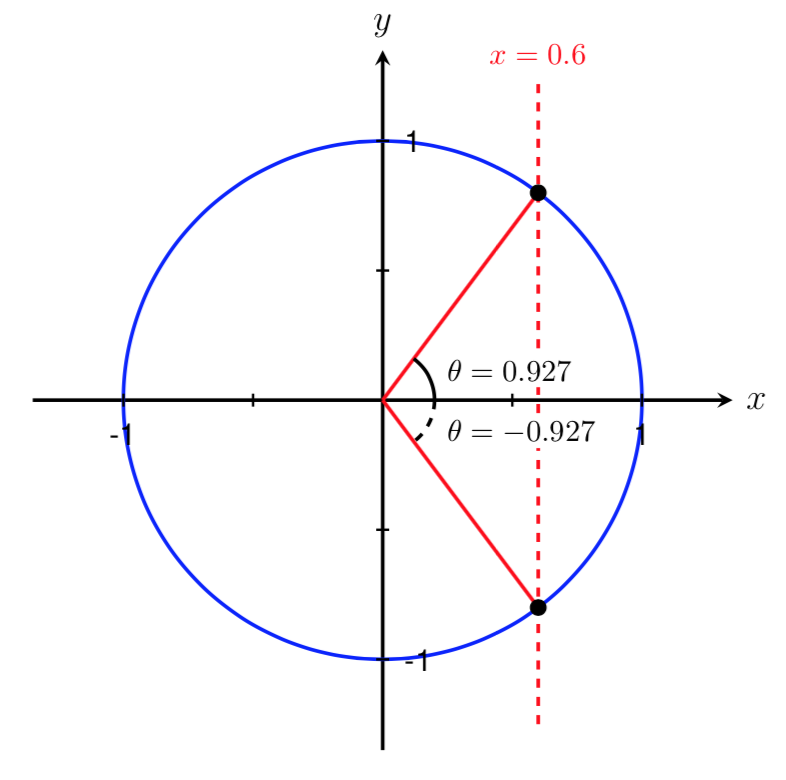
unit circle with cos(\theta)=0.6 two angles shown and labeled
Therefore, the polar coordinates of the point are
\begin{equation*}
(r,\theta)=(5, -0.927)\text{.}
\end{equation*}
